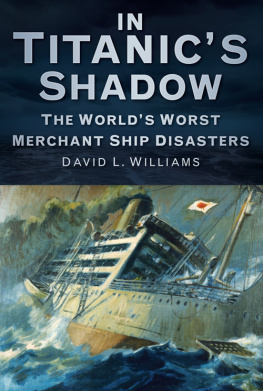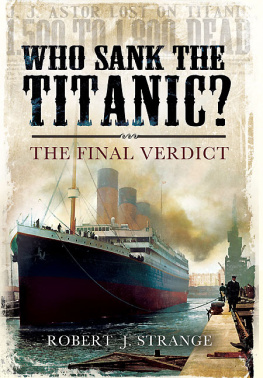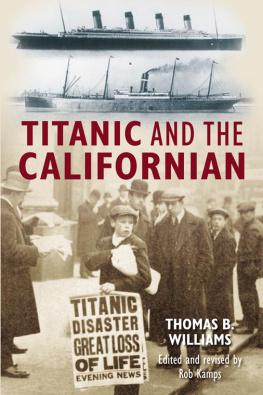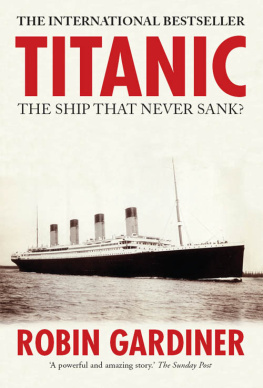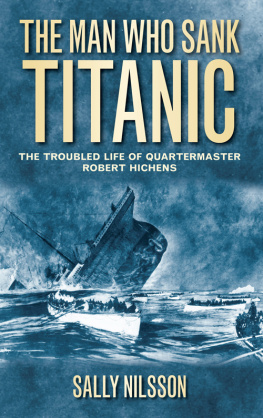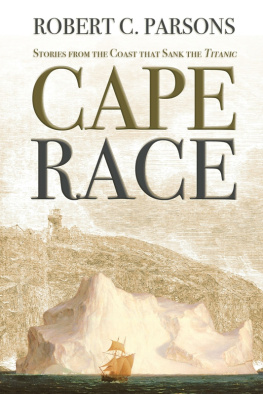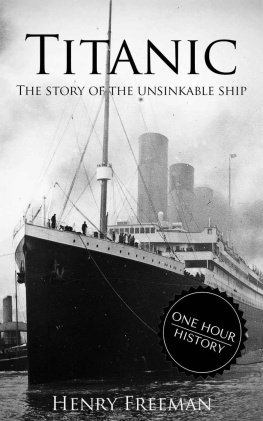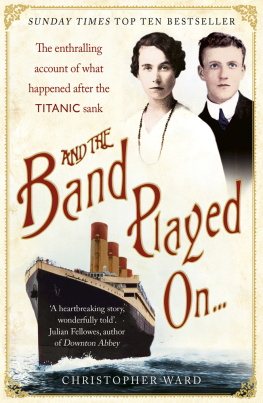Conklin - The Titanic Sinks!
Here you can read online Conklin - The Titanic Sinks! full text of the book (entire story) in english for free. Download pdf and epub, get meaning, cover and reviews about this ebook. City: New York;North Atlantic Ocean, year: 2009;1997, publisher: Random House Childrens Books, genre: Adventure. Description of the work, (preface) as well as reviews are available. Best literature library LitArk.com created for fans of good reading and offers a wide selection of genres:
Romance novel
Science fiction
Adventure
Detective
Science
History
Home and family
Prose
Art
Politics
Computer
Non-fiction
Religion
Business
Children
Humor
Choose a favorite category and find really read worthwhile books. Enjoy immersion in the world of imagination, feel the emotions of the characters or learn something new for yourself, make an fascinating discovery.

The Titanic Sinks!: summary, description and annotation
We offer to read an annotation, description, summary or preface (depends on what the author of the book "The Titanic Sinks!" wrote himself). If you haven't found the necessary information about the book — write in the comments, we will try to find it.
The Titanic Sinks! — read online for free the complete book (whole text) full work
Below is the text of the book, divided by pages. System saving the place of the last page read, allows you to conveniently read the book "The Titanic Sinks!" online for free, without having to search again every time where you left off. Put a bookmark, and you can go to the page where you finished reading at any time.
Font size:
Interval:
Bookmark:
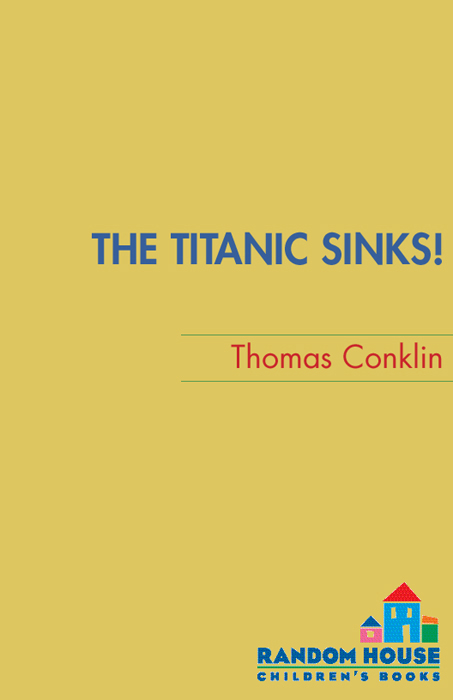
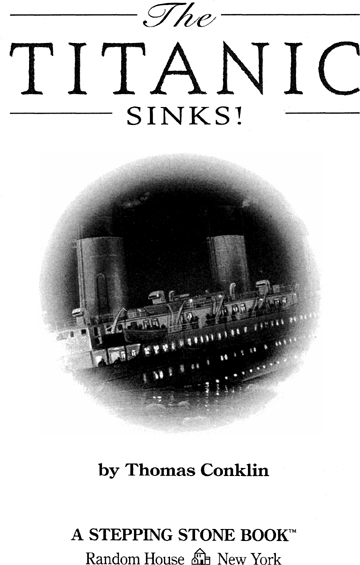
For the unsinkable Laura Christine
This book is based on facts. All the events described here are true accounts of real people.
In some cases, I have written dialogue or imagined what the passengers aboard the Titanic might have thought or felt.
Thomas Conklin
In late April 1912, Mayor William J. Gaynor of New York City received a postcard from Europe. It was dated April 11.
The front of the postcard was a picture of a huge ocean liner plowing through the waves. The ship had four large smokestacks and a vast black hull. It was the Royal Mail Steamer Titanic.
Mayor Gaynor turned over the postcard and read the message scrawled on the back:
Guess you had better chain up the Statue of Liberty to a skyscraper on Fifth AvenueBetter instruct the United States fleet to tow her in, or I guess New York will be wiped off the map.
The postcard was signed by Seaton Blake, a steward on the Titanic. Blake had mailed his message to the mayor just as the ship started its first voyage from Europe to New York.
Blake thought that the Titanic was so big and powerful that it would swallow up the Statue of Liberty as it passed by. After all, the Titanic was the greatest ocean liner ever.
To build the Titanic took almost three years. Its owner, the White Star Line, had spared no expense in making this the best ship afloat. When all the work was done, the Titanic had cost more than $10 milliona mind-boggling amount back in 1912.
From front to back the Titanic measured 882 feetalmost as long as three football fields. The steel plates of the Titanic were held in place by more than 3 million metal rivets. The rivets alone weighed 1,200 tons. The ships mammoth rudder was as tall as a house, and weighed a hundred tons. The Titanic had three giant propellers, powered by steam engines as strong as 46,000 horses!
The ship was designed with two goals in mindcomfort and stability. Advertisements for the Titanic described it as the most sumptuous palace afloat. Newspapers called it the wonder ship, the last word in luxury, and the millionaires special.
As long as four city blocks and as tall as an eleven-story building, the Titanic was incredible. For its first voyage, the ship was scheduled to travel from Southampton, England, to New York.
But the Titanic never made it to New York.
By the time Blakes postcard was delivered to Mayor Gaynor, the Titanic was in pieces on the ocean floor, under two and a half miles of freezing salt water. More than 1,500 peopleincluding Seaton Blakehad died along with the ship.
The entire world was shocked when the Titanic went down, only five days into its first voyage. Instead of signifying comfort and stability, the Titanic came to stand for disaster and terror.
Today, eighty-five years after the wreck of the Titanic, people are still fascinated by the death of the great ship. What was it like to sail on the Titanic? What happened that fateful night when it sank beneath the waves? How did anyone survive the terrible accident?
And, most important of all, how could such a disaster have happened?
Wednesday, April 10, 1912
Noon
The steam whistles of the R.M.S. Titanic bellowed a farewell as the immense ship eased into the harbor channel of Southampton in England.
It was an awesome sight. The crowd on the dock ran alongside the mighty Titanic as it slowly made its way to sea. On the docks, people yelled and waved handkerchiefs at the hundreds of lucky passengers on board. Passengers called good-byes and last messages from the Titanics many decks. Far up on the boat deck, the ships band played cheerful music, which added to the excitement.
The Titanic passed two ocean liners, the Oceanic and New York, as it moved down the channel. They seemed like toy boats next to the massive Titanic. The Titanics four huge funnels, or smokestacks, loomed over those of the other ships. The crowd on the dock cheered with pride as the colossal, queenly Titanic headed to the open sea on its first voyage.
Then, suddenly, a sound like gunfire echoed from the decks of the New York. Six hawsers, the steel cables that anchored the ocean liner in place, broke off and snaked through the air toward the dock. The panicked crowd screamed and ducked.
Onboard the Titanic, passengers crowded the ships rail and watched in horror as the New York drifted across the water. The smaller ship headed straight for the Titanics black hull, as if drawn by an invisible force. Officers on the New York shouted orders, and its sailors rushed to and fro. They draped mats over the side of the boat, hoping to soften the inevitable collision.
It seemed as though nothing could prevent a crash, but then the Titanic took charge. Its pilot ordered the port engine to surge. The engine rumbled with power, forcing water away from the Titanic. The swelling water pushed the smaller ship away at the last possible moment.
Passengers on the Titanic sighed with relief as a pair of tugboats came alongside the New York and towed it out of their ships path. After a short delay, the Titanic was again on its way.
Many of the Titanics passengers were impressed by the officers in charge of their ship. Their quick thinking had avoided the accident. The passengers were also proud to be the first on board this unsinkable ship. The Titanic was the largest moving object on the surface of the planet. It was so big it could pull and push another ocean liner as if it were a rubber duck.
As the passengers settled into their cabins for the voyage across the ocean, one woman turned to the crewman carrying her luggage.
Is this ship really unsinkable? she asked.
Yes, lady, the crewman replied with confidence. God himself could not sink this ship.
Thursday, April 11, 1912
Dusk
After that rocky start, the first leg of the Titanics voyage turned out to be smooth sailing. The ocean liner arrived at Cherbourg, France, on Wednesday, April 10right on schedule. There, dozens of passengers joined the ship, including John Jacob Astor and his young wife, Madeleine. Astor was one of the richest men alive. He and his bride had spent months honeymooning in Europe. Now they were returning to their home in New York.
On Thursday, the Titanic steamed to Queenstown, Ireland. There, the ship dropped its anchorsall thirty-one tons of themand its final passengers came aboard. Most of those who joined the ship at Queenstown were emigrants, leaving Ireland to start new lives in the United States.
Soon the Titanic was off again, steaming quickly away from the lovely rounded mountains of Irelands western coast. Nothing but the dark green ocean lay ahead of the ship as it made its way into the beautiful scarlet sunset.
One man on board, J. Bruce Ismay, was filled with doubt as the Titanic entered the open sea. Ismay was managing director of the White Star Line, the company that owned the R.M.S.
Font size:
Interval:
Bookmark:
Similar books «The Titanic Sinks!»
Look at similar books to The Titanic Sinks!. We have selected literature similar in name and meaning in the hope of providing readers with more options to find new, interesting, not yet read works.
Discussion, reviews of the book The Titanic Sinks! and just readers' own opinions. Leave your comments, write what you think about the work, its meaning or the main characters. Specify what exactly you liked and what you didn't like, and why you think so.

